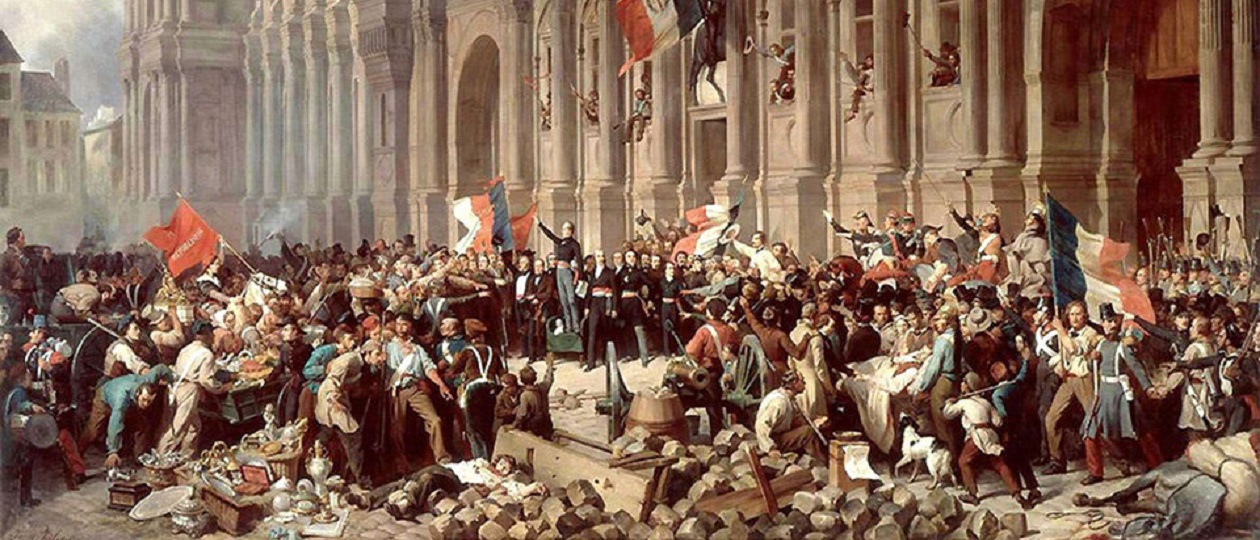
Political terrorism in the Russian Empire foreshadowed many trends in European terrorism especially in the late 20th to early 21st centuries.
However, Russian terrorism differed sharply from many tendencies in European terrorism particularly after 1918 right up to the present. Many of these differences reflect the conditions in which terrorism emerged during different historical periods. Each stage of European terrorism had its specific conditions giving rise to terrorist violence.
Terrorism continually evolves and new variations of it emerge. Many variations of terrorism today in Europe and the world simply had no equivalents in the Russian Empire.
Terrorist organizations generally rely upon certain mindsets and ideologies to attract followers. Acquiring a new mindset or ideology happens through the process of radicalization. The political-social conditions of a historical period influence how and why people turn to terrorism as a form of political struggle.
Two ideological or mental tendencies tend to inspire terrorists and other extremists. The first is disenchantment with traditional political institutions.
The second is eschatology — a religious teaching about the coming end of the present world and the coming of a new age. Since the French Revolution, eschatology has taken on political overtones and shaped virtually every political ideology.
Terrorism is one way of speeding up the end of the hated old world. Eschatology also appeals to extremists from the right to left. In fact, terrorists, extremists, and revolutionaries can see the present chaos as the immediate stage before a new age to come. This new age will bring about the rebirth of the nation or social class.
Note that the eschatological urge to speed up the destruction of the old world did not begin with Islamist terrorism. This mentality has been around in Europe since the French Revolution.
The Politics of Disenchantment
In many ways, terrorism is one major component of the politics of people who have become frustrated and disillusioned with traditional political institutions. These are people who feel that they have been betrayed by the traditional political parties from right to left. They regard the present situation as a catastrophe filled with chaos and there is no way out of this disaster. Disillusioned people can find different ways to end this situation.
Terrorists believe that the only way to end this world is through violence. However, most people hope that new political parties and movements will bring them out of the chaos in which they are living. These parties and movements hold extreme viewpoints, and many can evolve into terrorist movements or, at least, have members willing to use violence.
The Make America Great Again [MAGA] movement, headed by former United States President Donald Trump, is one major example. Millions of Americans follow MAGA because they believe that both the Republican and Democrat politicians in Washington DC have betrayed them. Big government is the main enemy blamed for why America has lost its greatness. Certain movements within MAGA advocate the use of violence to crush their opponents.
The MAGA movement is one example of populism. It is difficult to give a precise definition of populism. The root of the word populism is the Latin populis — the people. However, every political ideology and party insists that it represents the true interests of the people. The Oxford English dictionary defines populism means the policies or principles of different political parties striving to represent the interests of simple or ordinary people.
Populism is often associated with a political style rather than with a precise ideology. Populism is associated with social demagogy under the mask of defending the ordinary person from elite groups, governments, traditional parties, business, and other institutions. It is often associated with ignorance, xenophobia — hatred of foreigners, especially immigrants — and anti-intellectualism. Many opponents of populist parties, especially in the mass media, regard these parties as a rebirth of Fascism, National Socialism, and related ideologies.
So how do populist parties differ from other parties? Dutch political scientists Cas Mudde defined populism as an ideology proposing that society is divided into two antagonistic groups. The antagonists are <<the pure people>> and <<the corrupt elites>>. Populism proclaims that politics must be the expression of the general will of the people. By dividing the population into two hostile groups, populism is a variation of eschatology that regards everything as a cosmic struggle of good and evil forces.
Populist parties exist throughout the world, but the far-right populist parties in European parties attract the most media attention, especially during elections. German constitutional lawyer Wolfram Nordsieck defines right-wing populist parties as << protest parties that appeal to the common people. They appeared first in the early 1970s. This parties combine national stances with an anti-elitist rhetoric and a radical critique of the political institutions. They usually prefer law-and-order and anti-immigration polices.
Right-wing populist parties are nationalist parties, and they oppose migration, especially from Muslim countries, and multiculturalism. They accuse the European Union of violating the sovereignty of member states and their own governments of handing over their sovereignty to European Union bureaucrats in Brussels. These parties accuse the elites of the traditional conservative, Christian-Democratic, liberal, socialist, Social-Democratic, and other left-wing parties of betraying the interests of the voters. According to far-right populist parties, the elites of the traditional parties bear the responsibility for the decline of European Christian values and for the catastrophic situation today.
Although populist parties are generally associated with the far right, Europe also has new centrist and leftist populist parties. These parties have the support of people disillusioned with traditional liberal, Christian-Democratic, and leftist parties. Nordsieck defines left-wing populist parties as <<protest parties that appeal to the common people. This parties combine left-wing policies with an anti-elitist rhetoric and a radical critique of the political institutions. They usually oppose globalisation and prefer direct democracy, economic democracy, and social justice>>.
However, Europe has gone through several stages of mass disenchantment with traditional political institutions, especially political parties. At each stage, extremism, particularly from the far right and far left, and terrorism have surfaced on massive levels. Terrorism and extremism in the Russian Empire had their own variations in this endless cycle. The cycle of disillusionment began in the << Era of Dynamite>> from 1870-1914.
The <<Era of Dynamite>>
Terrorism was one long-term consequence of the massive changes in Europe caused by the French Revolution and other revolutions, the Industrial Revolution, and the consolidation of political and ethnic nations. The great European-wide transition from the pre-industrial order to the industrial age, or from feudalism to capitalism, affected different countries over a long period.
The great European transition from feudalism to capitalism was a stormy period of economic crises, huge social-political tensions and conflicts, and mass disorientation of the population. Causes of mass social frustration included the collapse of preindustrial political and social relationships and a crisis of values. Frustration and disorientation increased during the late 19th century.
Mass disorientation often led to a mass rejection by many people of the goals and values of the great changes. Continual crises, the general smashing of the usual structures and systems, the denial of religion and other traditional values, growing secularization, changes in gender and age relationships, political turmoil, corruption in politics and economics, the predominance of rationalism, the cold-blooded egoism of bourgeois liberal values, and other factors frightened many Europeans. Opponents of the changes saw the solution to the crisis not in the continuation of reforms, but rather diminishing and even abolishing them in hopes of returning to a golden age that existed in the preindustrial order.
Much of the disenchantment of many Europeans with the political-social order of the late 19th-early 20th centuries was related to the system of political parties. The process of organizing European political parties generally started after the Revolutions of 1848-1849. Before the revolutions there were many secret societies, usually made up of liberals, socialists, and nationalists, informal circles of political activities, especially on the local level, Masonic lodges, groups of like-minded people in parliaments and other legislative institutions. After the process of forming political parties began, there were both legal and illegal parties. As well, there were certain movements and parties, especially among anarchists of all tendencies, that did not participate in elections or parliaments.
European political parties and movements usually were organized in the following order in different countries. Liberal parties usually formed first, and they favored the continuation of economic progress and widening of political freedom. After the liberals, but not always, came the conservative parties favoring slower progress and the preservation of the best traditions of the past. There were also reactionary parties that wanted to preserve monarchical, church, and social estate privileges. Next came socialist, Social-Democratic, and other workers’ parties demanding the economic transformation of society and the liquidation of capitalism. Many leftist parties became members of the Socialist International [Second International] created in 1889. There were also peasant parties and agrarian parties of landowners. Nationalist parties across the political spectrum usually demanded autonomy or independence of ethnic groups. In the multi-national Austrian-Hungarian Empire, socialist, liberal, and conservative parties were often created along ethnic lines and there were parties for the ruling German and Hungarian nations. The German and Hungarian parties regarded Germans and Hungarians as being under threat from other ethnic groups. Russian nationalist parties also saw themselves as under threat by the Russian nationalist parties. In the Ottoman Empire, parties were usually organized on ethnic-religious lines. Regional parties fought for the rights of regions within different countries. Confessional parties tried to defend the rights of religious denominations, especially if they formed a minority within a state. Women’s and youth social-political movements demanded changes in social relations in state and society. Anarchist movements demanded the replacement of the state by a free association of communes. At the end of the line of party organization came far-right populist parties opposing liberalism and socialism and the traditional conservative parties. These parties are often called parties of political antisemitism because they often accused Jews of creating capitalism, liberalism, and socialism. Although these parties attracted few adherents, they were the forerunners of Fascist, Nazi, and related parties in political new conditions after World War One. There were also syncretistic movements combining rightist and leftist elements.
The far-right populist parties and syncretistic movements made the European political scene more varied. Although historians have often emphasized the antisemitism of the far-right populist parties, European socialists had their own traditions of left-wing antisemitism because they often identified Jews with capitalism. The syncretistic movements also were forerunners of certain later political movements containing rightist and leftist elements. Foremost was the movement of syndicalists, especially in France and Italy. Syndicalists advocated a general strike to destroy capitalism and the state and the creation of a new society under the leadership of trade unions. Many syndicalists in Italy became the first followers of Fascist leader Benito Mussolini. France in 1888-1889 had a movement against the Third Republic made up of royalists and Paris workers under the leader of General Georges Ernest Jean-Marie Boulanger. Note that many syndicalists and anarchists believed that they had been betrayed by socialist parties and unions who were using legal means to improve the conditions of workers and, consequently, had abandoned the revolutionary cause. Anarchists and syndicalists tried to restore the revolutionary fire and put an end to any attempts to work with the hated state.
Despite growing disenchantment with traditional political parties, many Europeans still preferred to seek change by legal means. The First World War broke apart states and societies in many parts of Europe and paved the way for more people turning to violence and extremist parties. Terrorism and other types of extremism were the choice of those from 870-1914who saw no way out of what they saw was a catastrophic situation.
Terrorism and the <<Era of Dynamite>>
Terrorism during this period was practiced exclusively by anarchists, especially in Italy, France, and Spain, and by nationalists, mostly in Ireland, the Balkans, and Ottoman Empire. Anarchists regarded the state as incapable of reforming itself. They sought to destroy the state and private property and replace them with a federation of free local communes. Nationalists regarded terrorism as one way of destroying their oppressor governments and of bringing about autonomy or independence for their ethnic communities.
Eschatology fueled terrorist movements because participants regarded terrorism as one way of speeding up the destruction of the hated old order and the coming of the new age. Political eschatology was far more developed in the Russian Empire.
The next articles will show how disenchantment with traditional politics and eschatology shaped other stages of the history of terrorism in Europe.
Citations
- Oxford English Dictionary. Third Edition. Electronic version.
- Рокки Т. Российское черносотенство и его место в прошлом и настоящем европейских популистских партий и движений: Опыт по компаративистике (The Russian Black Hundreds movement and its place in the past and present of European populist parties and movements: a comparative analysis) // Тетради по консерватизму. №1. Февраль 2020. С. 316–334. Режим доступа: http://essaysonconservatism.ru/wp-content/uploads/2022/10/2020_01.pdf
- Mudde, Cas, The Populist Zeitgeist. // Government and Opposition. Vol. 39. № 4 (Autumn). С. 541–563
- Right-wing populism // Parties and Elections in Europe http://www.parties-and-elections.eu/content.html
- Left-wing populism // Parties and Elections in Europe http://www.parties-and-elections.eu/content.html
- Рокки Энтони Карл. Политические партии и движения в Российской империи и европейских странах: сходство и различия. (Political parties and movements in the Russian Empire and European countries): similarities and differences. // Вестник МГПУ <<Исторические науки>> 2022, №3 (47), cc. 94-107.





